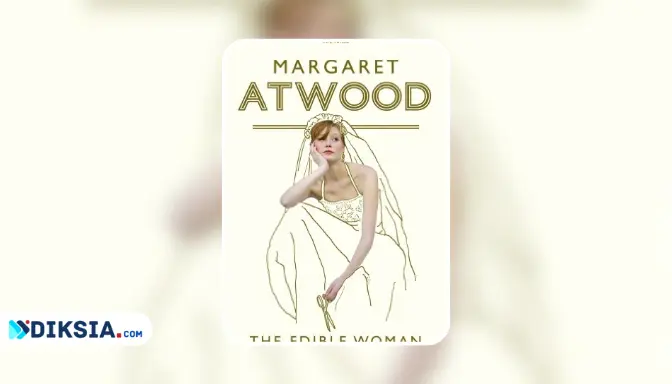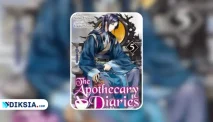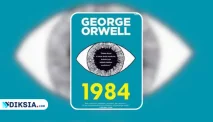Marian also meets Duncan, a graduate student who is writing a thesis on folklore and mythology. He is eccentric, cynical, and unpredictable. He likes to hang out in laundromats and watch other people’s clothes. He also likes to play games with Marian and test her reactions. He is attracted to Marian because he thinks she is different from other women. He invites her to his apartment, where he shows her his collection of paper cutouts of women that he calls his \”harem\”.
In the third part of the novel, Marian decides to break off her engagement with Peter. She realizes that she doesn’t love him and that she doesn’t want to live the life that he has planned for her. She also realizes that she has been suppressing her own personality and desires for too long. She tells Peter that she can’t marry him, and he reacts with anger and disbelief. He accuses her of being selfish and crazy, and he tries to force her to eat a cake that he has bought for her as a symbol of their relationship.
Marian refuses to eat the cake, and she runs away from Peter’s apartment. She goes to Duncan’s apartment, where she finds him with his friend Fisher. They are playing a game of cards with the paper cutouts of women. Marian joins them, and she picks the card that represents herself. She then eats the paper cutout, symbolizing her reclaiming of her identity and autonomy. She feels liberated and happy, and she kisses Duncan.
The novel ends with Marian leaving Duncan’s apartment and walking down the street. She feels hungry for the first time in a long time, and she decides to buy some food from a street vendor. She also decides to quit her job at Seymour Surveys and look for something more fulfilling. She thinks about her future, which is uncertain but exciting.
Characters and Character Development
Marian McAlpin
The protagonist of the novel. She is a market researcher who lives a seemingly normal and stable life until she gets engaged to Peter. She then starts to rebel against the pressures of marriage, consumerism, and conformity by rejecting food and breaking off her engagement. She regains her sense of self and identity by eating a paper cutout of herself at the end of the novel.
Peter Wollander
The antagonist of the novel. He is a lawyer who works for a prestigious firm. He is handsome, charming, confident, and ambitious. He falls in love with Marian and proposes to her. He represents everything that society expects from a successful man. He treats Marian like an object rather than a person, and he tries to control her life and choices.
Ainsley Tewce
Marian’s roommate who works as a tester for an electric toothbrush company. She is obsessed with having a baby without getting married or having a father figure for her child. She plans to seduce Len Slank, who works at the same company as Marian. She succeeds in getting pregnant by him, but she lies to him about having an abortion. She represents the opposite extreme of Marian’s situation: a woman who rejects marriage but embraces motherhood.
Duncan
A graduate student who is writing a thesis on folklore and mythology. He is eccentric, cynical, and unpredictable. He likes to hang out in laundromats and watch other people’s clothes. He also likes to play games with Marian and test her reactions. He is attracted to Marian because he thinks she is different from other women. He invites her to his apartment, where he shows her his collection of paper cutouts of women that he calls his \”harem\”. He represents an alternative perspective on gender roles and relationships.
Clara Bates
One of Marian’s friends who is married to Joe Bates and has three children. She used to be an active and adventurous woman, but she has become exhausted and overwhelmed by motherhood. She represents the consequences of traditional marriage and family for women.
Emmie Storch
One of Marian’s friends who is an art teacher. She is single and single. She is independent and confident, but she also feels lonely and insecure. She represents the possibility of a career-oriented and self-reliant woman.
Lucy Sladekova
One of Marian’s friends who is an immigrant from Czechoslovakia. She is a librarian and the girlfriend of Trevor Jordan. She is smart and cultured, but she also feels out of place and discriminated in Canada. She represents the challenges of adapting to a new culture and society.
Trevor Jordan
One of Marian’s friends who is an engineer and the boyfriend of Lucy Sladekova. He is friendly and generous, but he also has a tendency to be insensitive and patronizing. He represents the typical male attitude towards women in the 1960s.
Len Slank
A naive and immature man who works at the same company as Marian. He is the target of Ainsley’s scheme to get pregnant by him. He is unaware of her plan, and he believes that she loves him. He represents the victim of female manipulation and deception.
Fisher
Duncan’s friend who is also a graduate student. He is more serious and rational than Duncan, but he also shares his interest in folklore and mythology. He helps Duncan with his game of cards with the paper cutouts of women.
Theme and Message
The main theme of The Edible Woman is the oppression and exploitation of women in modern society. The novel exposes the various ways that women are dehumanized, objectified, and consumed by men, by the media, by the market, and by themselves. The novel also shows how women can resist and challenge these forces by asserting their individuality, autonomy, and creativity. The novel sends a message that women are not edible, but rather human beings who deserve respect, freedom, and happiness.
Writing Style
The Edible Woman is written in a witty, ironic, and humorous style that contrasts with the serious and dark subject matter. The novel uses various literary devices, such as symbolism, imagery, metaphor, satire, parody, and allegory, to convey its meaning and message. The novel also experiments with different points of view, switching from the first person to the third person and back to the first person, to reflect Marian’s psychological state and development.
Pros and Cons
Pros:
- Thought-provoking
- Well-written
- Insightful
- Humorous
Cons:
- Slow-paced at times
- Some may find the ending unsatisfying
Comparison to Other Works
The Edible Woman can be compared to other works that deal with similar themes or topics, such as:
- The Bell Jar by Sylvia Plath: A semi-autobiographical novel that depicts the mental breakdown of a young woman who struggles with depression, sexism, and social pressure in the 1950s.
- The Stepford Wives by Ira Levin: A horror novel that portrays a suburban town where all the women have been replaced by robotic duplicates who are obedient and submissive to their husbands.
- The Handmaid’s Tale by Margaret Atwood: A dystopian novel that depicts a totalitarian regime where women are enslaved and exploited for their reproductive functions.
- Fight Club by Chuck Palahniuk: A cult novel that depicts a violent underground movement that rebels against consumerism, conformity, and emasculation in modern society.
Where To Read Book
The Edible Woman is available in a variety of formats, including paperback, hardcover, and ebook. It can be purchased from most major retailers, such as Amazon, Barnes & Noble, and Books-A-Million.






